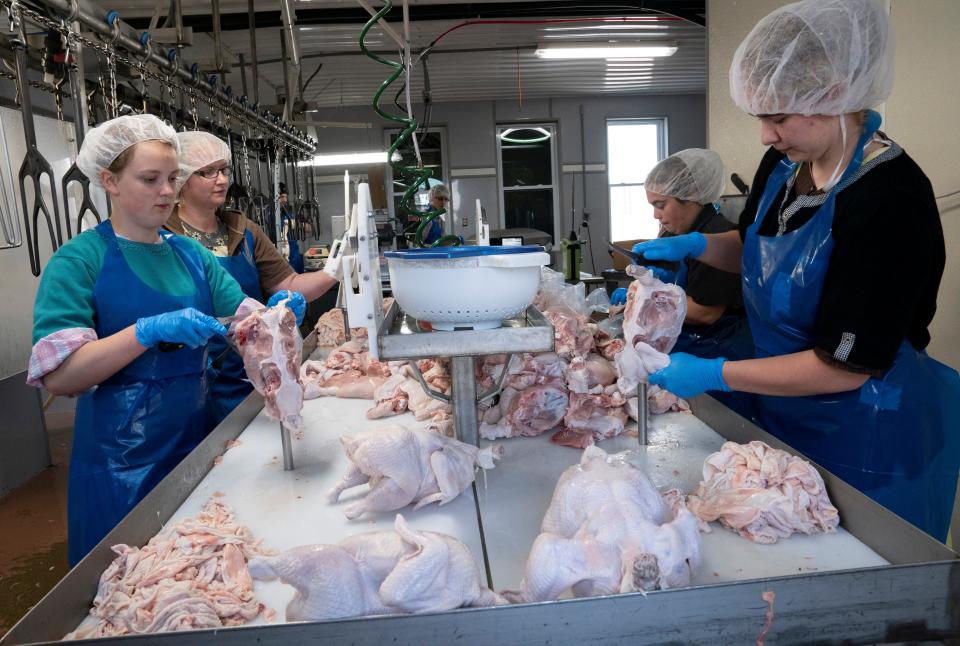Your coronavirus risk comes down to these 6 C's, according to the CDC's infectious-disease leader

Mark Makela/Getty Images
Japan successfully curbed coronavirus transmission by encouraging people to avoid three C's: closed spaces, crowded places, and close contacts.
The CDC's Deputy Director for Infectious Diseases, Jay Butler, added three more C's to that list on Wednesday: continuous exposure, coverings, and cold.
Related: Epidemiologists debunk the 14 biggest coronavirus myths
In the spring, as the coronavirus spread rampantly around the world, the Japanese government instructed residents to avoid the three C's: closed spaces, crowded places, and close-contact settings. By the end of May, the country had lifted its state of emergency with less than 17,000 cases. Japan never locked down completely.
This week, the CDC's Deputy Director for Infectious Diseases, Jay Butler, offered an expanded list of C's, which he described at a virtual workshop held by the National Academy of Sciences, Engineering, and Medicine on Wednesday.
"Of course we all like simple more than complex, but the fact is that there are a number of variables that come into play whenever we're talking about risk of transmission," Butler said.
His list accounts for environmental factors like temperature and behavioral factors like time spent in a high-risk location:
Crowds: Avoid large gatherings.
Close contact: Stay at least 6 feet apart from people outside your household.
Continuous exposure: Prolonged contact with family or friends presents a higher risk than quick, passing interactions.
Coverings: Wear a mask in public.
Cold: Certain work environments, like meatpacking plants, may present a higher risk.
Closed spaces: Interacting outdoors is better than indoors.
In presenting these guidelines, Butler drew an analogy between recent public-health directives and safer sex practices.
Abstinence may be akin to avoiding all contact with others: it's a guarantee that transmission won't occur. But mask-wearing, like condom use, can still offer significant protection against transmission. And choosing when to engage in close contact with someone, as with choosing a sexual partner, should be done with knowledge of their health status.
"The closer you get, the greater the chances of infection," Butler said.
The newest C's: continuous exposure, coverings, and cold

Amanda Edwards/Getty Images
By now it's fairly common knowledge that reducing one's potential coronavirus exposure requires avoiding crowds, closed spaces, and close contact. But there's a host of new research to support Butler's additional three C's:
1. Mask-wearing saves lives.
A preliminary analysis of 194 countries found that places where masks weren't recommended saw a 55% weekly increase in coronavirus deaths per capita after their first case was reported earlier this year, compared with 7% in countries with cultures or guidelines that supporting mask-wearing. A model from the University of Washington predicted that the US could prevent nearly 67,000 coronavirus deaths by December if 95% of the population were to wear face masks in public.
2. Lower temperatures may affect transmission.
Recent data also suggests that colder environments may be riskier — even though seasonal temperature so far seems to have a negligible effect on the virus' spread. Cold comes into play in workplaces like meatpacking plants: In a July report, the CDC linked more than 16,000 coronavirus cases to 239 meat and poultry processing facilities across the US.
"Cooler temperatures in the work environment may help to facilitate transmission because SARS-CoV2 is viable for longer periods at lower temperatures," Butler said.

Dane Rhys/Reuters
Indeed, a June study found that higher temperatures and lower humidity dry out coronavirus-laden droplets faster on surfaces. An April study also found that the virus lasted up to two weeks in a test tube at 4 degrees Celsius (39 degrees Fahrenheit) compared just a single day at 37 degrees Celsius (99 degrees Fahrenheit).
But the length of exposure matters, too. Workers inside meatpacking facilities are often crammed shoulder-to-shoulder for 8-hour shifts.
3. Spending more time near other people increases the risk that the virus will spread.
People who live under the same roof as an infected person are often at high risk of contracting the virus. A June study found that the virus's infection rate was around 17% among people who shared a residential address. That's higher than the household-transmission rates for SARS or MERS. Other studies have found that the attack rate among households could be as high as 50%.
"Secondary attack rates are generally greatest in household contacts," Butler said. "The risk appears to be lower in other interpersonal contacts, including sharing a meal. Passing interactions while shopping appear to be much, much lower risk."
Given these six C's, he added, one of the highest-risk activities is going to bars. People eat and drink at bars, which requires them to remove their masks, and they also may get less diligent about sticking to proper distancing and hygiene precautions after a few drinks. To top it off, people tend to spend longer in bars than at other venues.
"We've heard a number of anecdotes from state health officials and state epidemiologists of clusters of infections that were linked to going to bars," Butler said.
Earlier this month, photos began to circulate of University of Alabama students crowded outside bars in Tuscaloosa. By Monday, the university had reported more than 560 coronavirus cases, just six days into the school year. Tuscaloosa recently shuttered all bars for at least two weeks.
Read the original article on Business Insider

